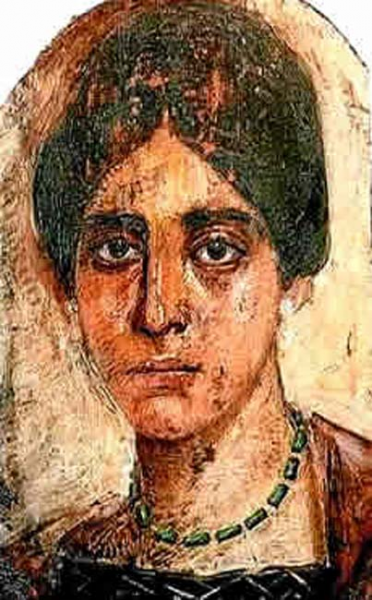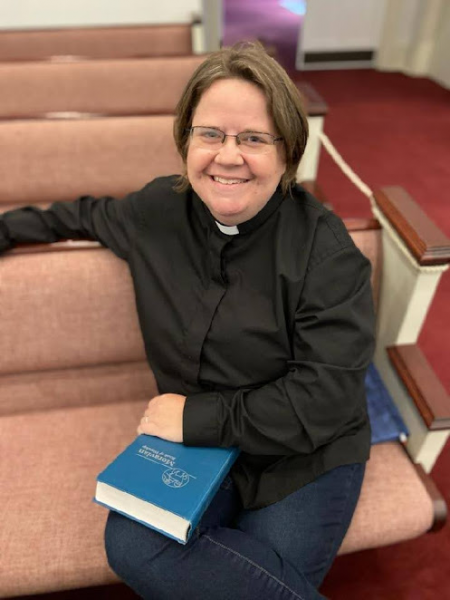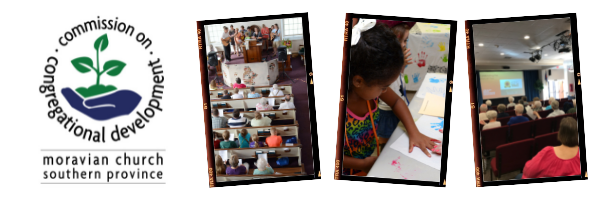
BY DANA MYERS |
What the Moravian Church needs is a passport! One of my favorite past times when we travel is to visit the Moravian churches local to any area that we visit.
Since Moravians are kind of rare anyway, it can be like a treasure hunt in a strange city, hunting for familiar imagery – a lamb seal, a Moravian star, an Agnus Dei, even a recognizable rounded arch over a door can indicate that Moravians are nearby.

Photo via Unsplash.
There is something powerful in these places, an unspoken energy that resonates through the car when we spot those familiar symbols. “Moravians!” we exclaim. In the middle of a strange city, surrounded by fast food chains that we don’t know and streets with names we can’t pronounce, a vacation becomes a pilgrimage.
In the 380s, another young pilgrim likely scoured the streets and towns of the ancient world looking for familiar signs that she found recognizable. Egeria, a Christian woman with a pagan name, undertook one of the first known pilgrimages to the holy land, wrote a travel blog about her experiences, and likely returned home after her travels to a heroine’s welcome. She taught us what it means to explore a foreign world in search of familiar symbols. She taught us the power in a place, the way the Spirit’s Aura can still be felt just by standing in the sunbeams of a hazy stained glass window, the way we lower our voice just by the sheer overwhelming nature of the height of a cathedral. More than just a traveler passing through the holy sites, Egeria was a pilgrim, and through her work, perhaps we can learn how to be pilgrims, too.
Egeria was born in Western Europe. She was named for a Roman goddess who had counseled a king, Romulus’s successor Numa Pompilius, about the specifics of Roman law. For a pagan woman who converted to Christian, Egeria surprisingly kept her name and began her adventure on a journey to discover the Christian holy sites. What must it have been like for a Christian woman with a pagan name to book plane tickets to the most Christian sites in the world?
Her story leaves us with many questions, but her writing reflects a heart for exploration and discovery. Some sources say Egeria was a nun, others that she was only a devout follower of Christ, writing back to a circle of female friends and relatives. Either way, her account is one of the oldest of its kind in the world, and her spirit of exploration gives us inspiration to pursue our own pilgrimages into holy sites, looking for the familiar and clinging to the spiritual power of a place.

Photo courtesy of Dana Myers.
We can imagine Egeria’s excitement the night before she left on her grand tour of Biblical sites. She was obviously thoroughly Biblically educated, but the lack of details and missing pieces of her account makes us wonder: did she know exactly where she would travel? Was the route predetermined or was she up for some side trips along the way, dependent on the holy men and women of God she met along the way to direct her to those “must-not-miss” places?
Egeria also had some great vacation traditions. Who doesn’t relish a postcard from every stop? “There, too, we made the oblation, with very earnest prayer, and also read the passage from the book of the Kings; for it was our special custom that, when we had arrived at those places which I had desired to visit, the appropriate passage from the book should always be read.” (McClure 7) Egeria must’ve felt like she was living the events she had only read about – experiencing what she must’ve felt like was the presence of God in those very real biblical places – Sinai, Horeb, Haran.
Egeria must’ve been breathless with each site she visited, for at times her account reads like a hurried note written just before bed, trying to capture all the excitement of a day in just a few lines. We can almost see Egeria’s hand trembling by the light of the candle as she strives to remember every place and the significance of each day’s journey. “They showed us also… they showed us also… they showed us also…” (McClure 9) And in each place, she finds Brothers and Sisters, one of the first instances we are aware of the recognition of the global family of Christ, unified beyond language, nationality, gender, or economic status.
Around the time of Egeria’s trip, the Council of Rome established the biblical canon of Scripture. For the first time, Egeria knew that the sites she was visiting were of biblical significance and absolutely, unquestionably of biblical origin. I wonder if she thought, “let the councils figure out the doctrine – I want to actually live my faith!” And it wasn’t enough to only see the holy sites. Empty churches are great, but Egeria seems to delight in the camaraderie of her Brothers and Sisters in the faith. “We stayed there two days, for the memorial day and for the sake of seeing those holy men, who deigned to receive me very willingly for the sake of salutation, and to speak with me, of which I was not worthy.” (McClure 37-38) After all, much of the value of the trip is in the people one meets along the way.
Yet it wasn’t enough for Egeria only to make her travels and recount her adventures to her Sisters in faith. She also worshipped, a unique faith practice of just being in these places that held special importance. Just like our travels across the country to unfamiliar Moravian churches, Egeria’s trip was filled with the power of worshipping in places filled with the Spirit’s presence.
How can we, like Egeria, use our own travel experiences as a pilgrimage? It is a concept many of us don’t understand, the idea of a sacred journey. We search for meaning and truth within ourselves or within the familiar trappings of our everyday faith existence, but going thousands of miles to find those things? It can seem as foreign to us as perhaps it did to Egeria’s friends in Galicia. But the power of the journey is in the Spirit’s presence. Whether visiting Prince of Peace Moravian Church in Miami, Memorial Moravian on Saint Thomas, Arcadia Moravian in Bethelsdorp, South Africa, or back home at Home Moravian in Salem, North Carolina, the power of the Spirit is present in the journey. Egeria set an example for us that makes that Moravian passport seem like a pretty good idea after all – a way to mark our experiences with the Spirit, both near and far.
Works Cited
“380s.” Wikipedia. Wikimedia Foundation, January 4, 2021. https://en.wikipedia.org/wiki/380s.
Domain, Public. “Moravian Seal.” NCpedia. Accessed April 7, 2021. https://www.ncpedia.org/media/moravian-seal.
“Egeria (Mythology).” Wikipedia. Wikimedia Foundation, February 17, 2021. https://en.wikipedia.org/wiki/Egeria_(mythology).
“Egeria (Pilgrim).” Wikipedia. Wikimedia Foundation, March 15, 2021. https://en.wikipedia.org/wiki/Egeria_(pilgrim).
Klimczak, Natalia. “Rediscovering the Story Of Egeria, a Remarkable 4th Century Female Pilgrim,” October 30, 2016. https://www.ancient-origins.net/history-famous-people/rediscovering-story-egeria-remarkable-4th-century-female-pilgrim-006910.
“Mediterranean Medieval Places of Pilgrimage.” EGERIA. Accessed April 8, 2021. http://www.egeriaproject.net/main.aspx.
The Pilgrimage of Egeria. Accessed April 8, 2021. https://www.ccel.org/m/mcclure/etheria/etheria.htm.
About the Author

Dana Myers is a pastoral intern at Unity Moravian Church in Lewisville, North Carolina; a student in Luther Seminary’s MDivX program in Saint Paul, Minnesota; and a candidate for ordination in the Moravian Church Southern Province. She is a proud mom to Raine, spouse to Matt and dog mom to Bandit and Rosie. In her spare time, she enjoys hiking, local history, and the theology of science fiction (especially Dr. Who and Harry Potter). She can be reached at [email protected].
Requests for republishing, click here
Want to volunteer to write for us? Click here
Follow the Moravian BCM on Social Media:







